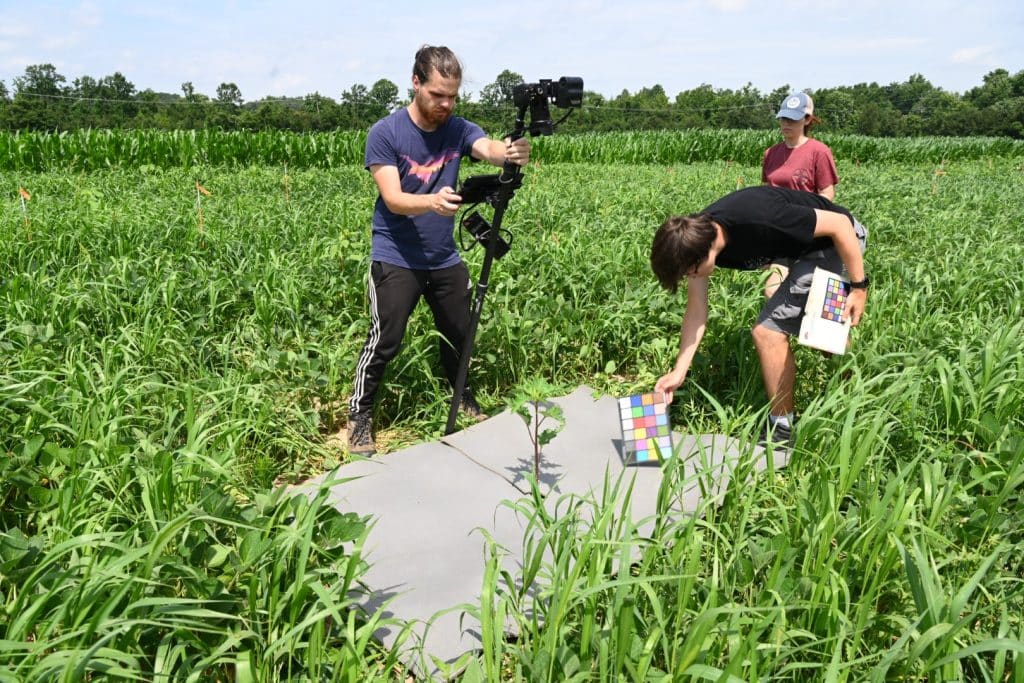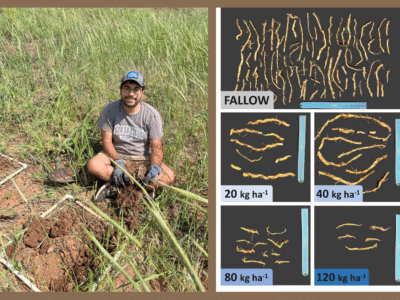You might have noticed a new webpage appeared in GROW’s Weed Management Toolbox recently, called Precision Weed Management. (If you haven’t, go check it out!)
“Weed management is changing forever with this technology.
Dr. Nathan Boyd, UFL
And it’s going to change for everyone.”
The new page gives a face to a growing part of GROW’s research and development projects, including the National Ag Image Repository and the mapping tools that will follow from it. But it also gives a brief overview of the fast-moving, game-changing industry of precision weed management.
That’s an umbrella term we’re using to mean any kind of weed management practice that is applied precisely, either to specific areas in a field or down to an individual plant level. That may mean using drones, robots, precision sprayers, or even satellites. But the outcome is the same: using the right tool, at the right time, with the right intensity, only where it is needed.
That kind of fine-tuned management has been slower to develop in weed control compared to other agronomic practices such as precision planting or variable rate nutrient applications. But it’s here now, and a lot of experts feel it is the likely future of all weed management.
“Weed management is changing forever with this technology,” University of Florida weed scientist Dr. Nathan Boyd recently told attendees of the Weed Science Society’s 2024 meeting in San Antonio, Texas, in January, about the field of targeted pesticide applications. “And it’s going to change for everyone.”
Boyd identified several areas where he expects this kind of precision weed control to change and improve the industry:
1. Improve consumer trust and acceptance of pesticide use:
The current practice of broadcasting herbicides across the majority of acres every year, across crop production industries, has not been a PR success story with the general public, Boyd points out.
Target spray applications could help change that. With camera-sensing technology only activating spray nozzles for individual weeds, the practice is expected to significantly lower the amount of herbicides used.

2. Improve compliance with Endangered Species Act label changes:
EPA has already begun the process of adding new spray restrictions to pesticide labels to account for risks to endangered species. Some big targets for the agency will be reducing spray drift, runoff and the amount of herbicides used. Targeted weed applications will be an obvious way to help applicators and farmers reach those new standards, Boyd notes.
3. Work well with existing integrated weed management programs:
Farmers who are using multiple weed management tactics to keep weed densities low are likely the ones who will see the most savings and benefits from targeted weed applications, Boyd notes. And those are often operations that are already incorporating non-chemical weed management strategies, such as cover crops or harvest weed control.
Targeted weed management could also make some alternative weed control tactics, which aren’t feasible on a broadcast level, such as certain organic herbicides, or lasers and heat, worth trying on a spot-application level, Boyd adds. Overall, the marriage of IWM and targeted weed management seems like an obvious win.
4. Improve crop & field management with mapping technology:
With cameras on targeted sprayers (or drones or robots) scanning a field with every pass, farmers will potentially have access to detailed, real-time maps of their fields and every plant growing in it. They’ll also have a bird’s-eye view of the effect of each weed management tactic they are using, Boyd points out. “That means you can determine if your herbicide system is effective or if you need to change things,” he says.
Are you already using a precision weed management tool with success? Let us know!
In the meantime, stay up to date on GROW coverage of this industry on our News Page and the new Precision Weed Management page.
Article by Emily Unglesbee, GROW; Header photo by Ubaldo Torres, Texas A&M; Feature photo collage by Emily Unglesbee, GROW, Claudio Rubione, GROW, and Ubaldo Torres, Texas A&M




























































































